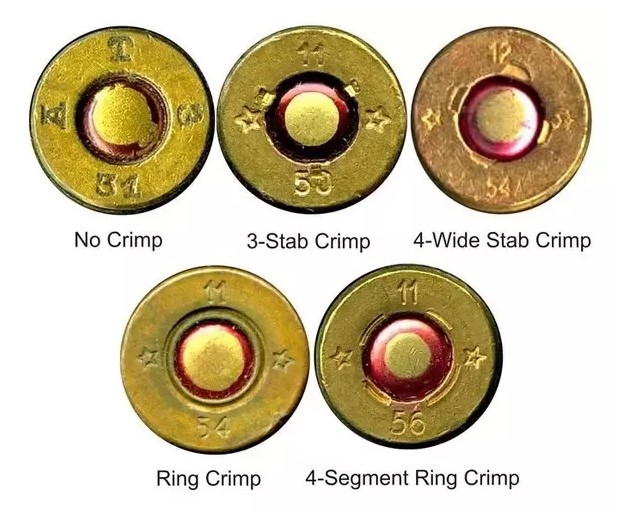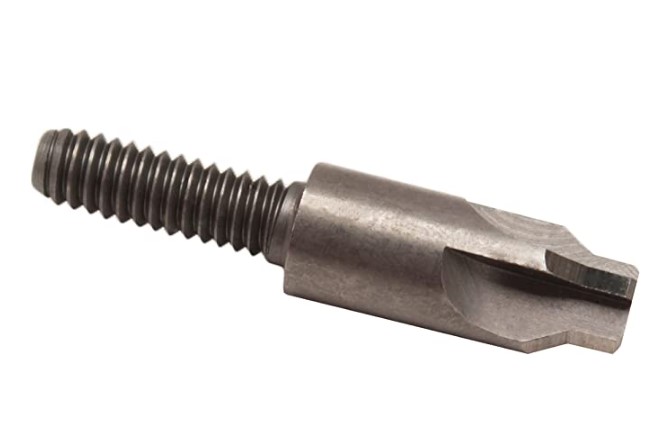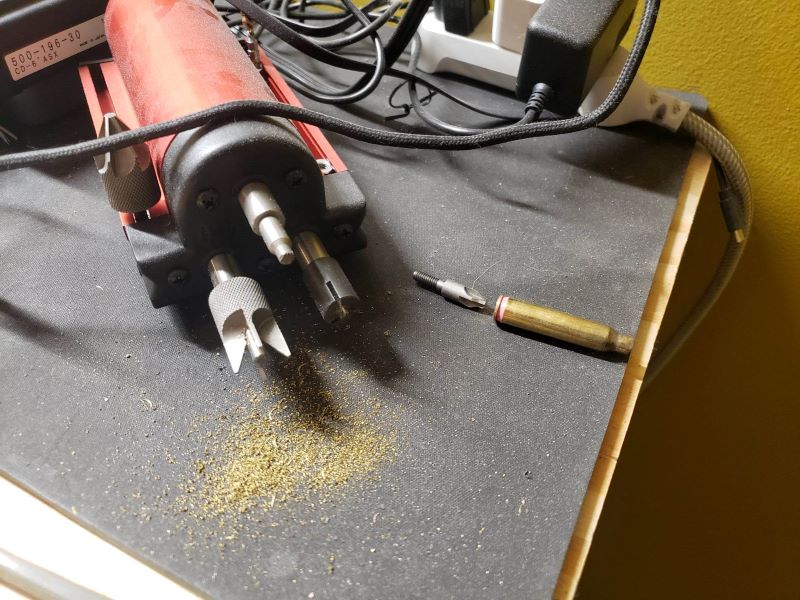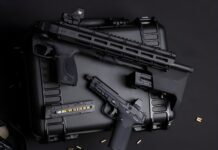
Background story: When I first started reloading I was mainly reloading for my 6.5 Creedmoor. This meant brand new Lapua brass and no issue with primer pockets. Then I started shooting .223, a lot of it. Therefore, I wanted to buy once fired .223 brass and start playing with that first. Many local gunstores have .223 once fired brass. So I take a trip and get two bags of 250 IMI brass cases without even a thought of looking at the primer pockets. Instead, I just verify that they all have the same headstamp. Turns out, all of these pieces of brass had crimped primer pockets meaning, when I remove the primer and go to seat another one, it will not seat and each pocket will need to be shaved out. HEAVY SIGH. More work, more time…more knowledge.
When loading for .223 knowledge on crimped primer pockets will need to be had as many .223 casings have it. These crimped primers can cause you to run into issues such as primers not seating and more equipment needed to remedy that. T get around it all together, specific brass types can be bought.

What is a crimped primer pocket?
Many NATO type ammunition will have crimped primer pockets due to wanting to prevent popped primers. In the simplest of terms this means that the primer is sealed into the pocket by crimping or almost like a staking/swaging to prevent a primer from coming loose from the case. There are a couple of different styles of this. For example, a ring crimp will have a circle type crimp all the way around the primer. If you don’t know to look for it you won’t notice it. There is then stab crimping. There is a 3 stab and 4 stab. This looks like 3 or 4 stake markings around the primer.
How do I find brass without a crimped primer pocket?
First, stick to unfired/brand new brass. If it is unfired that means that there has never been a primer seated into the brass, thus no crimping. If you don’t want to do that, stick to the civilian stuff and..do your research. Some civilian ammo still has crimped primers so be sure to either research or look at the once fired brass in the plastic bag before you buy it.
How do I fix it?
Alright, this is where things can get confusing and/or tick off reloaders and their preference of equipment. Before going into equipment, first let’s talk about what actually needs to be done.
If you have a crimped primer case first thing that needs to happen is the primer needs to be removed in order to seat a new primer. When popping that out due to it being staked in and harder to press out, it is recommended to use a Universal decapping die instead of your seating die. You don’t want to brake or have to adjust your seating die due to a really hard to remove primer so just go with a simple and cheap universal die like the Universal Lee Decapping Die.
Now, this is really important. The crimp needs to be entirely removed to avoid any issues while seating the primer. Having a primer get stuck midway into the pocket and the hand primer or whatever primer seating tool you’re using can get weird. It is not good to force the primers in either as they can explode. I personally have seen it happen to friends.
So how do you remove it? There are a few different ways and pieces of equipment but you will need something that has “swaging” or “reaming” in the name. Below are some recommendations.

Hand Swaging Tool
Lyman Primer Pocket Reaming Tool
Price: $13.50
Bench Mounted Non Electric
Dillon Precision Super Swage
Price: $143.00
Electric Dual Purpose Case Prep Station
Hornady Lock N Load Case Prep Trio
Price: $145.00

Moral of the story, when you are thinking about what kind of brass to pick up for loading .223 ensure that you check for crimped primer pockets and that you know how to properly remove ALL of the crimp.



